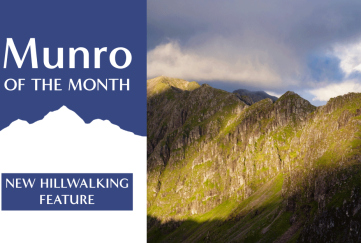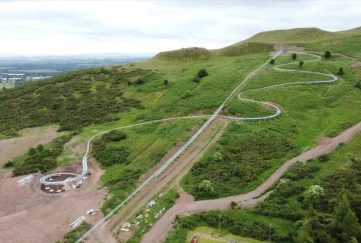Bird On A Mission
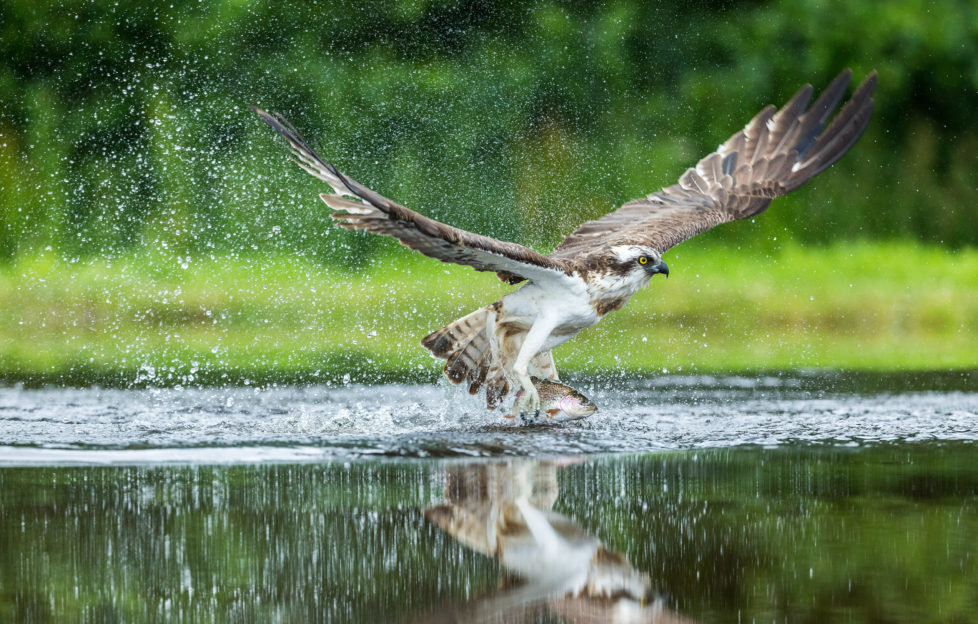
Ospreys continue to amaze and delight and amaze nature writer Jim Crumley
The ice-blue of bergs above a sprawl of low hills. They glow eerily green this early summer early morning, thanks to the curious alchemy of burgeoning bracken and hill grass. I always think the colours look wrong for Scotland. Green hills and cloudlessness is too Mediterranean for edge-of-the-Highlands Stirlingshire. The area looks more like itself when its sky wears thundercloud grey. Or, when the land is happed in tawny or purple, or the shades of snow.
But it’s July, and the wind is elsewhere. The water is like smoked glass and wears no colour I can put a name to. Except, that along its northern shore it reflects with uncanny precision the ice-blue and weird green. The sun is newly risen. The day is as fresh and sweet as bog myrtle after rain.
There in the north is a distant span of wavering wings. I found it with the binoculars in a wide sweep of sky, hill and loch. Even at that distance there is no mistaking an osprey on a mission.
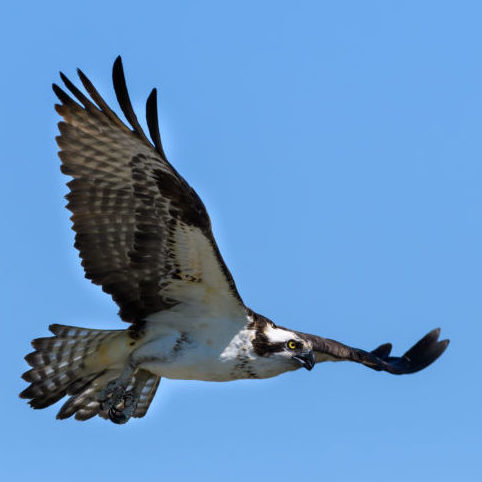
There’s no mistaking an osprey Pic: Shutterstock
The perfect hunting ground
Ospreys home in on this loch not just from a variety of nests around its shore, but also from further afield. But this one and its mate are the only ones that travel from Highland Scotland into Lowland Scotland for the privilege of fishing here.
The loch lies at just 18m (60 feet) above sea level. The osprey has crossed a pass in the green hills at 365m (1200 feet). There’s another loch, but that one lies at 76m (250 feet) above sea level. The mountain beyond it is almost 914m (3000 feet). One loch is Highland and deep, and one is Lowland and shallow. The Lowland one is stocked with thousands of rainbow trout every year, hence the appeal to a hunting osprey. It is not unusual to see half a dozen ospreys over the Lowland loch at one time. Sometimes, twice that number once the young birds start flying. But only one of them will have crossed the hill pass to get there.
The osprey fishes in his home loch from time to time but he would rather fish down here. He comes on rhythmically: a few flaps, a glide, a few flaps, a glide. At about 60m (200 feet) up he crosses the shore. He is less than half a kilometre away and as vivid white as snowdrifts.
An effortless catch
Now he hesitates and begins to circle. He is no more than 45m (50 yards) away and 30m (100 feet) up when he stops on the air. He holds himself there. His head is rock-steady. But the tail is a flickering fan and the wings waver constantly. Their edges gleam in the sunlight. The legs are restless. The bird flips them back, stowing them beneath the tail. They drift forward almost at once.
The bird suddenly dips its left wing, heels over and falls. The wings go high, the feet thrust out and down.
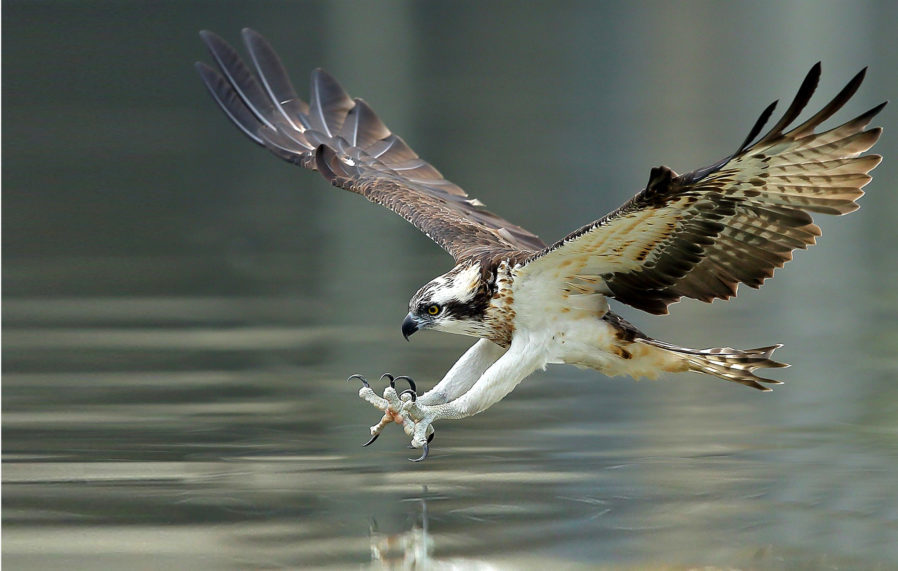
The osprey readies itself to make the catch. Pic: Shutterstock
The bird is still, on the water, its wings laid flat on the surface. Nothing happens. Seconds pass. Then the first wing stroke, forward and shallow. A heaving backstroke that lifts the bird onto its tail, then the sluggish high-winged beats.
He wins clear. The fish is held in one talon, which won’t do. A shudder goes through him and water cascades from his plumage in every direction. His talons dig into the fish and rearrange it in his grasp so that it is secure.
He is no more than 6m (20 feet) up when he takes a bearing on the distant hill pass. Now he begins to work. Hampered by what may be a 900g (2lb) rainbow trout, he begins a shallow climb. He has another 335m (1100 feet) to climb before he reaches the hill pass. When people build a road up a steep hillside, we use zig-zags and hairpins. The osprey deploys circles.
A bird like no other
He is good at this. Every complete circle lifts him higher. It looks like – and it is – hard work. One more circle and I believe he is there, although it is hard to be sure now from this distance. But, surely he is too far left? It looks as if the low-point in the hill skyline is half a kilometre to his right. He continues to circle and climb. By now, he is well above the altitude he needs to cross the pass. He heads instead for the hilltop. When he finally levels out he is on a course that crosses directly above the summit.
Two possible explanations occur to me. One is that the sun had been warming the south-facing hillside for over an hour and benevolent thermals were stronger on the line he took. The other is that given how well he knew the terrain, his experience had taught him the line of least resistance lay on that course. Perhaps, he spotted a wandering sea eagle and made a diversion. There is also the consideration that our definition of logical behaviour is not always the one that occurs to a wild bird.
Or perhaps he was just not paying attention.
International followings
Ospreys continue to amaze and delight us. We enjoy them in a way unlike our relationship with any other bird of prey. The crowds that home in year after year on Loch Garten and Loch of the Lowes are unique to ospreys. Likewise, the international following for Lady of the Loch and the passions raised over the T in the Park controversy involving Strathallan Castle’s ospreys. Likewise, the tension I felt in my arms when the osprey of that morning disappeared over the hill horizon still clutching its fish. There are countless theories about why all that may be so.
Mine is that the osprey is simply a beautiful bird that does things differently.
You can read more of Jim Crumley’s Scottish wildlife columns
online here, and each month in The Scots Magazine.



